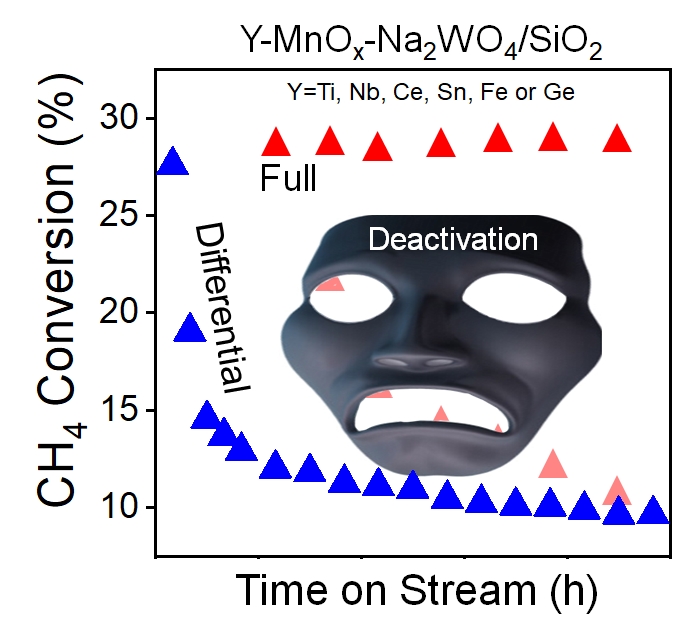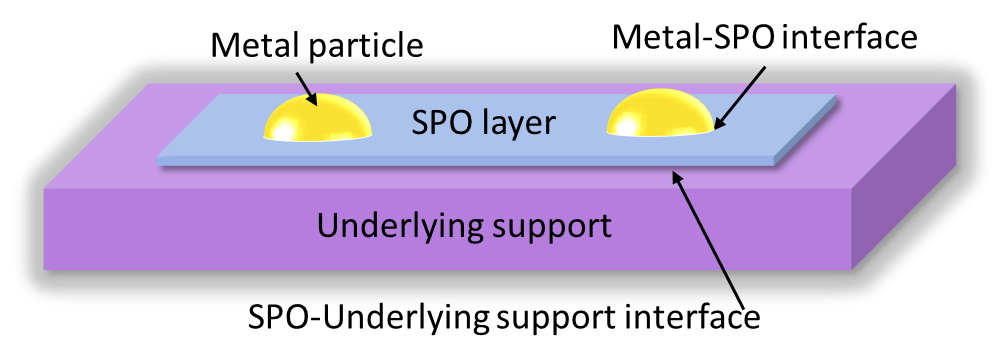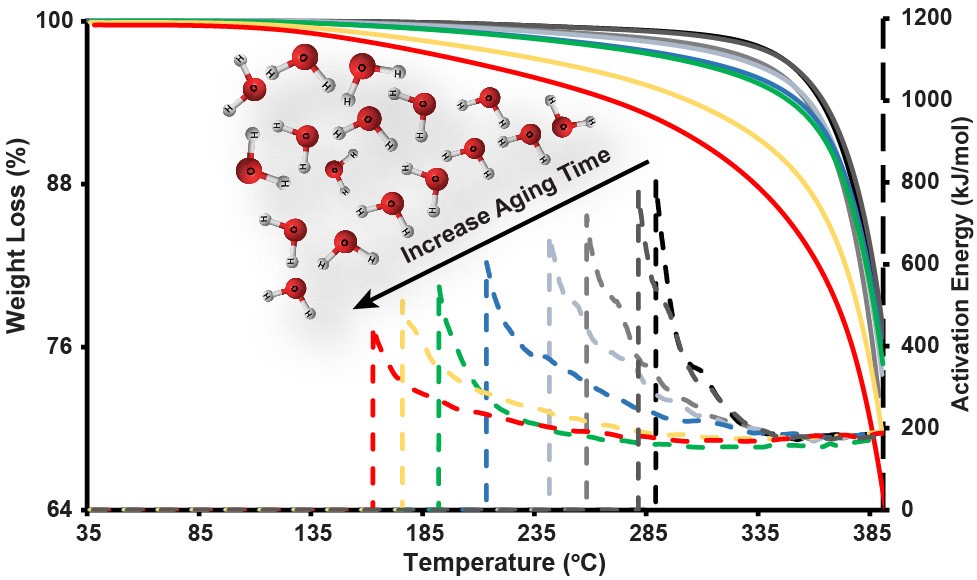Methane oxidative coupling
 The Challenge
The Challenge
The oxidative coupling of methane (OCM) is a highly attractive reaction because it provides a direct and thermodynamically unlimited route to convert the major component of natural gas into ethylene.
The problem
Despite all efforts, OCM still provides industrially insufficient C2 yields (<30%), that mainly depend on catalyst performance and its ability to steer the reaction away from the thermodynamically favored pathway of methane oxidation to CO and CO2.
The research
We are working to understand the performance of the most promising catalysts and to apply that knowledge to better working catalysts that operate under more energy efficient process conditions.
Relevant publication
Cooperative catalysis
 The Challenge
The Challenge
Cooperative heterogeneous catalysts are a class of materials that contain at least two active sites that work in concert to activate an electrophile and a nucleophile to promote a single chemical transformation. The cooperative mechanism is accompanied by a lower activation energy, which allows conducting the reaction under milder conditions as well as increases the overall catalyst activity and may also lead to a higher selectivity, as compared with single-site catalyst analogs. As such, cooperative catalysts can make the overall chemical process significantly more environmentally-friendly.
The problem
To synthesize an efficient cooperative catalytic material, three architectural levels in material design need to be engineered: 1) the 3D structure of the support, 2) the immediate chemical environment surrounding the catalytic site and 3) the precise positioning and orientation of the catalytic sites.
The research
We are working to design innovative catalysts configurations and to understand how those catalysts operate. Of specific interest is their performance in the conversion of molecules derived from plant biomass. reactions.
Relevant publication
Dry reforming

The Challenge
The conversion of CO2 with methane (i.e. DRM) is receiving significant attention as a possible path to convert large amounts of the two major anthropogenic greenhouse gases, methane and carbon dioxide, into to syngas and in-turn to value-added chemicals. Nickel (Ni)-based catalysts have been identifying as the most promising earth abundant catalyst for this reaction.
The problem
Maintaining a stable and active Ni catalyst under DRM conditions is more challenging because of its tendency to sinter or coke under reaction.
The research
We are working to design innovative catalysts for this reaction based on thin (~1-2 nm) metal oxides a secondary oxide. This configuration provides new sites with unique properties residing at the interface between the two oxides. We are specifically interested in balancing and controlling these interactions, which are key for obtaining superior performance in this and many other reactions.
Relevant publication
Plastic recycling

The Challenge
To find ways to reduce our reliance on plastic, increase recycling and disposal practices, and develop alternative materials that are more sustainable and less harmful to the environment and human health.
The problem
Plastic is an important component of almost everything we use.We extensively use synthetic polymers like polyethylene (PE) because they have exceptional thermal and chemical properties as well as excellent processability. Unfortunately, the highly stable chemical structure of common synthetic polymers is also what makes them not biodegradable, resulting in the accumulation of huge amounts of post-usage waste.
The research
We are working to define what defines a good plastic for recycling and what not. In addition we are developing processes to promote plastic recycling.